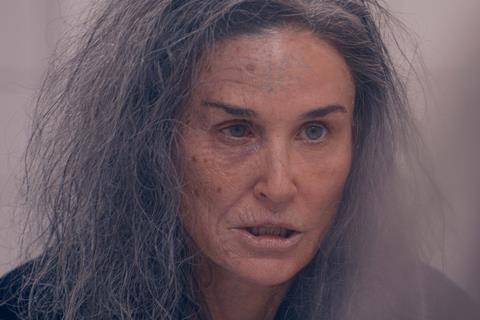
The Substance has five Oscar and five Bafta nominations; it also has 36,000 gallons of fake blood. It is the most visually horrifying film to have received major categories consideration from these two esteemed voting bodies.
Coralie Fargeat’s film is not alone: Hugh Grant is Bafta-nominated for best actor in A24’s jump-scare-filled Heretic, while Robert Eggers’ Nosferatu is also recognised in five Bafta and four Ampas craft categories. Does this slew of nominations mean genre films or awards voters are changing? The answer is they both are.
Genre films have enjoyed sporadic success with awards voters of the past decades. Horror nominees and winners have impressed mostly in the crafts chapters: The Omen, The Fly, Bram Stoker’s Dracula, Alien and more won crafts Oscars. Rosemary’s Baby and Misery have won for performances. The Exorcist, famed for its 10 Oscar nods and the first horror film nominated for best picture, won best screenplay and best sound.
The Silence Of The Lambs, Pan’s Labyrinth and The Shape Of Water also performed well across multiple categories, although those titles might be better labelled as thriller or fantasy. Jordan Peele’s Get Out launched the modern era of thought-provoking, audience-pleasing social commentary horror and was Oscar-nominated in four major categories in 2018, winning for best original screenplay.
Paths to glory
Bafta and Oscar voters are paying attention to these highbrow horror films, and the voter demographics are evolving to include people who are organically more attuned to horror than elderly white males. In 2014, Los Angeles Times found the average age of Oscar voters was 63 years old — that has steadily come down in the decade since. Although Ampas does not release voter age data, an analysis of new voters invited from 2015-19 found 46% were aged under 50.
Women are big horror fans, and female voters made up 44% of the new 2024 class for Ampas. Bafta also does not disclose its voters’ age data, but it is notable the voting body has grown from 6,400 film voters in 2015 to 8,100 in 2025.
Even with the profile of voters changing, it is not that Longlegs or Under Paris are suddenly contending for best picture slots. And this year’s genre success stories have each had unique paths to glory.
For his part, Nosferatu director Eggers is known as a Cannes-selected auteur rather than a genre director, and his latest film is based on the 1922 German Expressionist classic, a cinephile favourite.
As for Grant, one UK awards strategist believes his nomination for Heretic is more about the actor than the film: “He has entered his national treasure phase.” Bafta’s acting chapter determines the nominees and fellow actors rate Grant highly — he is enjoying a beloved period of his career, which includes Paddington 2 and Wonka (both Bafta-nominated for outstanding British film) and, in the opinion of this strategist, earns further industry kudos for his role in taking on the UK tabloids in the phone-hacking scandal.
Also, while Heretic’s marketing positioned it as a horror film, “it’s more like a psychological treatise on religion,” says the strategist — filled with existential dread rather than gore.
But it is The Substance that has connected with voters on several levels, despite the blood and guts on display. “The feminist message and social commentary has connected with audiences,” says another campaigner. Hollywood also adores a comeback story, and Demi Moore’s bold physical and emotional performance has widened the film’s appeal, earning her Bafta and Oscar nominations (a pitch-perfect Golden Globes acceptance speech sealed the deal).
As is well known in industry lore by now, Universal originally backed The Substance but wanted Fargeat to significantly re-edit her cut, particularly the extreme gore of the last 20 minutes. To her credit, Fargeat stuck to her guns and the team resold the film to Mubi, which rose to the challenge of its biggest release yet. The company’s indie sensibilities arguably served the film better than a studio campaign might have done. This campaigner says it is important that most of the film’s gore comes in those last 20 minutes. “If it opened like that, some voters would have switched it off,” they add.
Regardless of the mitigating factors, the success of these films seems to indicate voters are less squeamish than they were. It may take a few more seasons, however, to see whether their bloodlust remains.

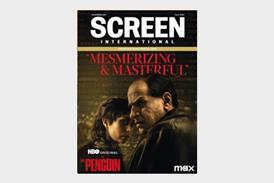
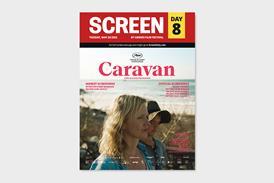
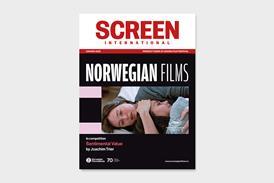
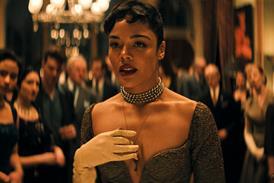







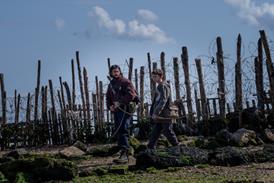

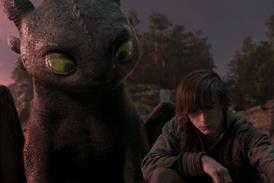










No comments yet